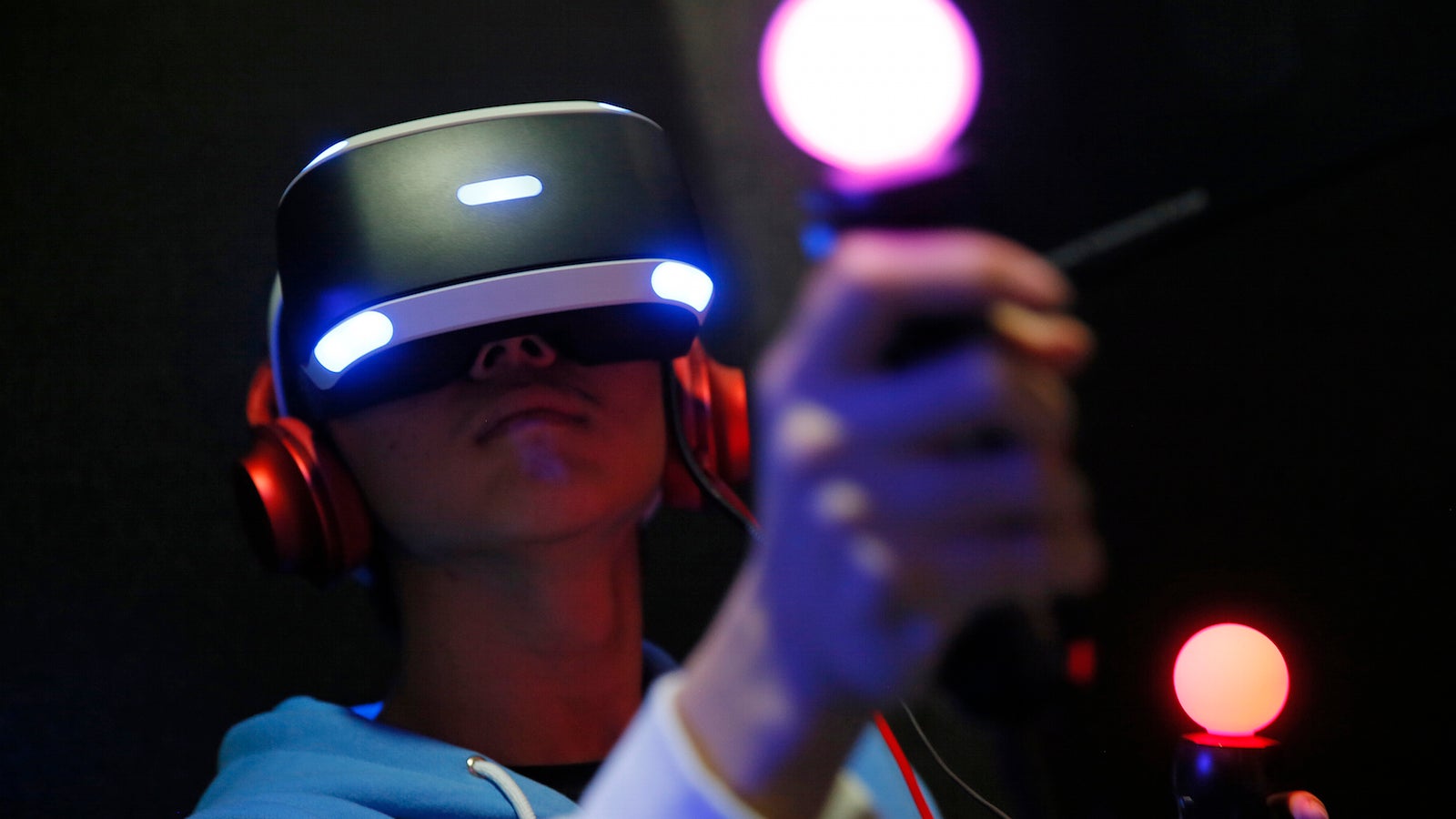These five books will help you understand the future of virtual reality
Ladies and gentlemen, strap on your goggles: Analysts and pundits predict that 2016 will be the year that virtual reality finally takes off. Venture capitalists have already plowed billions of dollars into virtual reality, and Google and Facebook are each gunning to corner the market on headsets.


Ladies and gentlemen, strap on your goggles: Analysts and pundits predict that 2016 will be the year that virtual reality finally takes off. Venture capitalists have already plowed billions of dollars into virtual reality, and Google and Facebook are each gunning to corner the market on headsets.
For people whose main associations with virtual reality involve 1990s computer games and The Matrix, this fresh wave of excitement may seem hard to understand. But it’s not too late to catch up. Here are five books that can help you understand what all the fuss is about.
Ready Player One by Ernest Kline
Published in 2011, this young adult novel has stormed best-seller lists and brought virtual reality science fiction into mainstream consciousness. The novel evokes a vision of a dystopian future in which Earth’s resources have been depleted and the US economy is in shambles. Luckily, everyone has affordable virtual reality headsets that allow them to escape their grim lives and participate in an online universe with unlimited possibilities: the OASIS. With satisfying plot lines and a cinematic feel (Steven Spielberg’s directing the movie version), the book is a love letter to gaming that will make even newbies understand its appeal.
Snow Crash by Neal Stephenson
Readers with more hardcore sci-fi appetites should pick up Snow Crash, a 1992 novel that has the rare distinction of influencing the trajectory of what’s soon to be a multibillion-dollar industry. Oculus chief scientist Michael Abrash writes that the book “made me realize how close networked 3-D was to being a reality.” Snow Crash has also had a lasting influence on the terminology in the virtual reality field, coining the terms “avatar” and “Metaverse,” among other concepts. The book itself is nuts in the best possible way, with a plot that shifts between ancient Sumerian myths, battles, virtual reality, and dystopian mega-religions. It’s long, but well worth the madness.
Masters of Doom by David Kushner
Masters of Doom covers the rise of Id Software, the company that produced first-person shooter games Doom and Quake.
This book is more about gaming than virtual reality per se. But it’s worth reading for two reasons. First, Doom and Quake brought about innovations in computer graphics that have been widely hailed as the first steps toward consumer-ready virtual reality. Second, the book is largely centered around gaming legend John Carmack, the current CTO of Facebook’s Oculus.
One vignette tells the story of how Carmack met and hired Michael Abrash, now chief scientist of Oculus. Carmack managed to entice Abrash to leave Microsoft for Id—despite the efforts of Bill Gates, who made a personal call to his then-employee asking him to stay.
Understanding Movies by Raphael Shargel
Once you’ve gotten an overview on gaming history via Masters of Doom, buff up on your cinematic expertise with Understanding Movies. After all, virtual reality is the next consumer medium, and filmmaker Chris Milk is its first auteur.
Understanding Movies offers a comprehensive series of lectures on the history of film. English professor Shargel introduces readers to the Lumière brothers and George Méliès, the original French pioneers of film in the 1890s. The book swiftly moves through the German expressionists and the Russian montage school in the 1920s; the rise of the Hollywood studio system in the 1930s; the European neo-realists and American film noir directors of the 1940s and 1950s; the French New Wave and its American counterpart; and all the way on to the birth of the wide-release blockbuster with Jaws, Star Wars, and Raiders of the Lost Ark.
Virtual reality film is still in its Lumière era. But consumer adoption of new technology happens much more quickly nowadays. A lot of creative people and smart money are trying to get us to the age of the blockbuster 2020.
Learning Virtual Reality by Tony Parisi
Parisi is a longtime veteran of the virtual reality industry, having lived through the rise and fall of the hype bubble in the 1990s and was one of the first to bring 3-D graphics to the web. In 2015, he further cemented his legacy with a primer for programmers on developing for virtual reality. The book makes the topic accessible to anyone with basic software development skills. General readers should check out his excellent, non-technical chapter on the recent history of virtual reality headsets. It’s a testament to the speed of change in the field that 2012 already counts as history.